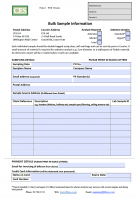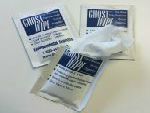|
||
Taking a Sample It may not always be necessary to have a person specialising in asbestos take a sample for you. The following items can be sampled by an adult with care! Repiratory protection (RPE) is recommended. If you are not sure, please give us a call. Any trades engaged by a homeowner or company becomes a PCBU, the requirements of The Health and Safety at Work (Asbestos) Regulations 2016 do apply and when refurbishment is planned a survey is recommended, even in homes. Even when using RPE care needs to be taken to prevent creating any dust, which may contain asbestos fibres. Wash all utensils under running water and wipes immediately after use. If any material drops on the carpet or floor, DO NOT VACUUM or SWEEP, clean up all debris with a damp cloth. Dispose of cloth after use. All samples should be placed in sealed plastic bag and double bagged. Small zip lock bags are ideal. If you prefer us to take the sample, please send an email with your details. Additional charges do apply. As mentioned below soil samples are a little different, please contact us by email or phone to discuss soil sample collection. |
||
Find an area that has been damaged or take from a discreet area, such as under a light shade, smoke alarm, or in the corner of the room. Dampen the area with water to prevent dust. Gently scrape a tablespoon full of the textured material off the ceiling with a flat edge, ensuring the 'pimply' or textured part of the plaster is included, you should do this in 3-5 different areas of the material you'd like tested. Its ok to combine rooms, but if the material looks different it should be sampled and tested separately. NOTE: We do not need the gib underneath the textured material. |
||
Dampen an area, using scissors or a craft knife, cut off a piece about the size of a 2x3 cm2 approximately or 5cm diameter. Ensure that vinyl floor covering samples include the papery backing material which usually remains stuck to the floor as this is often where the asbestos is found. A wide range of flooring materials including adhesives, screeds & levelling compounds, terrazzo, and felt backings under carpets can also contain asbestos. |
||
Cement Sheet Find an area that has been damaged or a discreet corner of the material. Dampen the material with water to prevent dust, use a piece of baby wipe in your pliers and break off a portion the size of an old 50 cent piece - 2x3cm. |
||
Ideally come and pick up a "Ghost Wipe" from our lab to use first, or we can post one out to you. The Ghost Wipe is a wipe that dissolves on digestion during the analytical stage. If thats not practical, please use a damp facial tissue (NOT a baby wipe). Unfold the wipe or tissue and gently wipe over dust surface, folding in the dust and continuing to wipe over the surface area you want to test. Place the used wipe or tissue inside a plastic bag and seal. Please note a dust sample must be at least a tablespoon of material for it to be an accredited test. Dust wipe and tape tests are no longer accredited by IANZ. |
||
Soil Samples
|
||
Sample Analysis
We have a dedicated Ianz Accredited laboratory for all our analytical services. IANZ Accredited analysis includes Bulk Samples including Soils, Air Monitoring Fibre Counts and Gravimetric Analysis. Click on any of the links for further information. Please read our Information Section.
Standard turnaround varies depending on how busy the laboratory is and how many urgent samples are requested. 3-5 Days is typical for non-urgent samples and every effort is made to ensure your analysis is carried out as soon as possible.
* Urgent analysis turn around is usually 24 hours, numerous samples and busy periods may increase this time. We will always try to let you know if analysis time frames need adjusting, please feel free to give us a call if you have special requirements. Thank you for your understanding.

 NZ OWNED AND OPERATED
NZ OWNED AND OPERATED Sampling And Testing
Sampling And Testing  Textured Plaster Ceilings/Walls
Textured Plaster Ceilings/Walls Flooring: Vinyl Floor Coverings or Linoleum Tiles
Flooring: Vinyl Floor Coverings or Linoleum Tiles
 Dust Sample - Swab
Dust Sample - Swab There is a lot of discussion around soil sampling for asbestos and subsequent analysis methodologies at present. Collecting soil samples should follow good practice methodologies; BRANZ Asbestos in Soil and The Land Contamination Assessment Guidelines published by the Ministry for the Environmental (MfE). Sampling for asbestos in soils should be carriied out by suitably experienced personal,
There is a lot of discussion around soil sampling for asbestos and subsequent analysis methodologies at present. Collecting soil samples should follow good practice methodologies; BRANZ Asbestos in Soil and The Land Contamination Assessment Guidelines published by the Ministry for the Environmental (MfE). Sampling for asbestos in soils should be carriied out by suitably experienced personal,